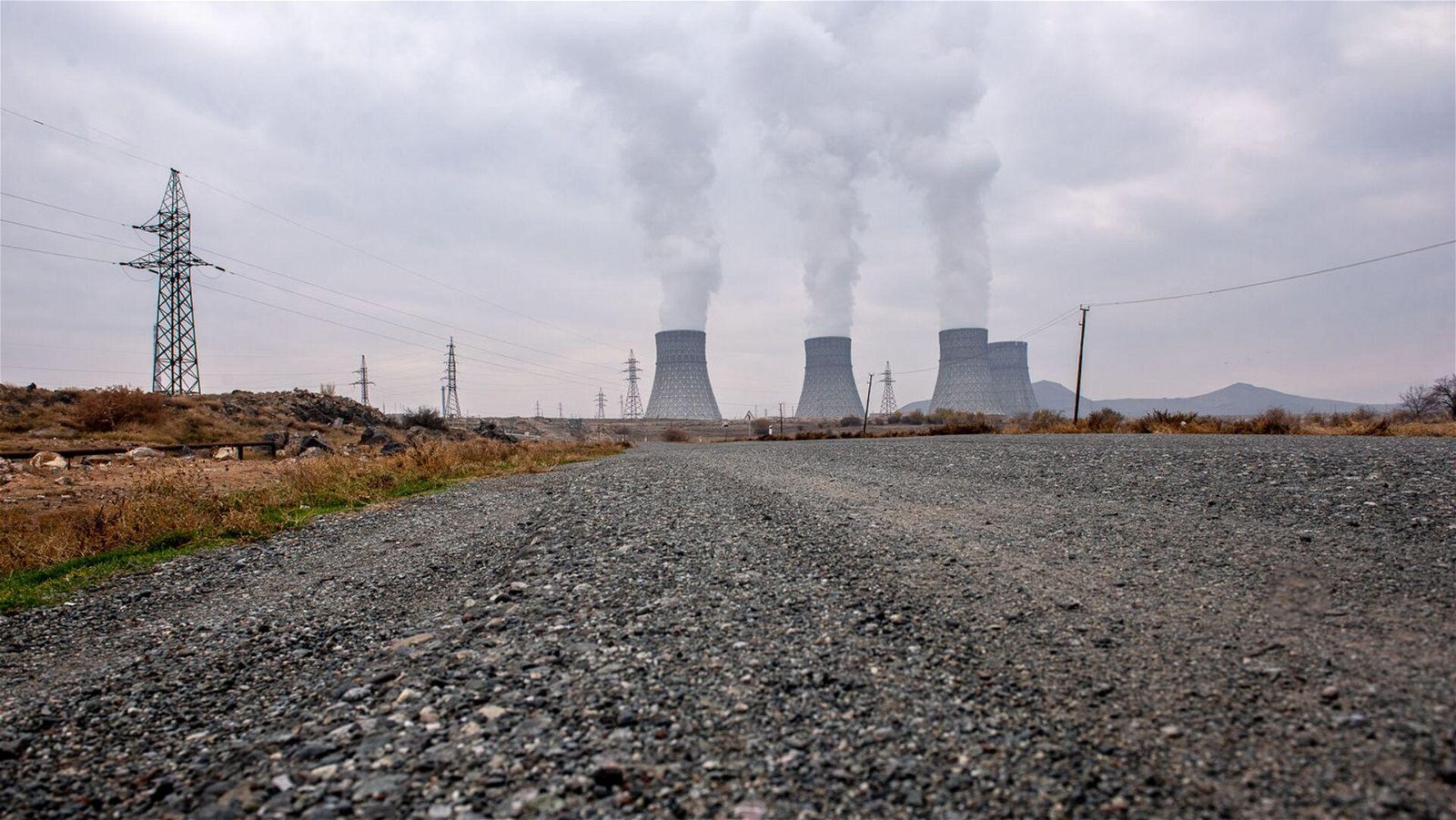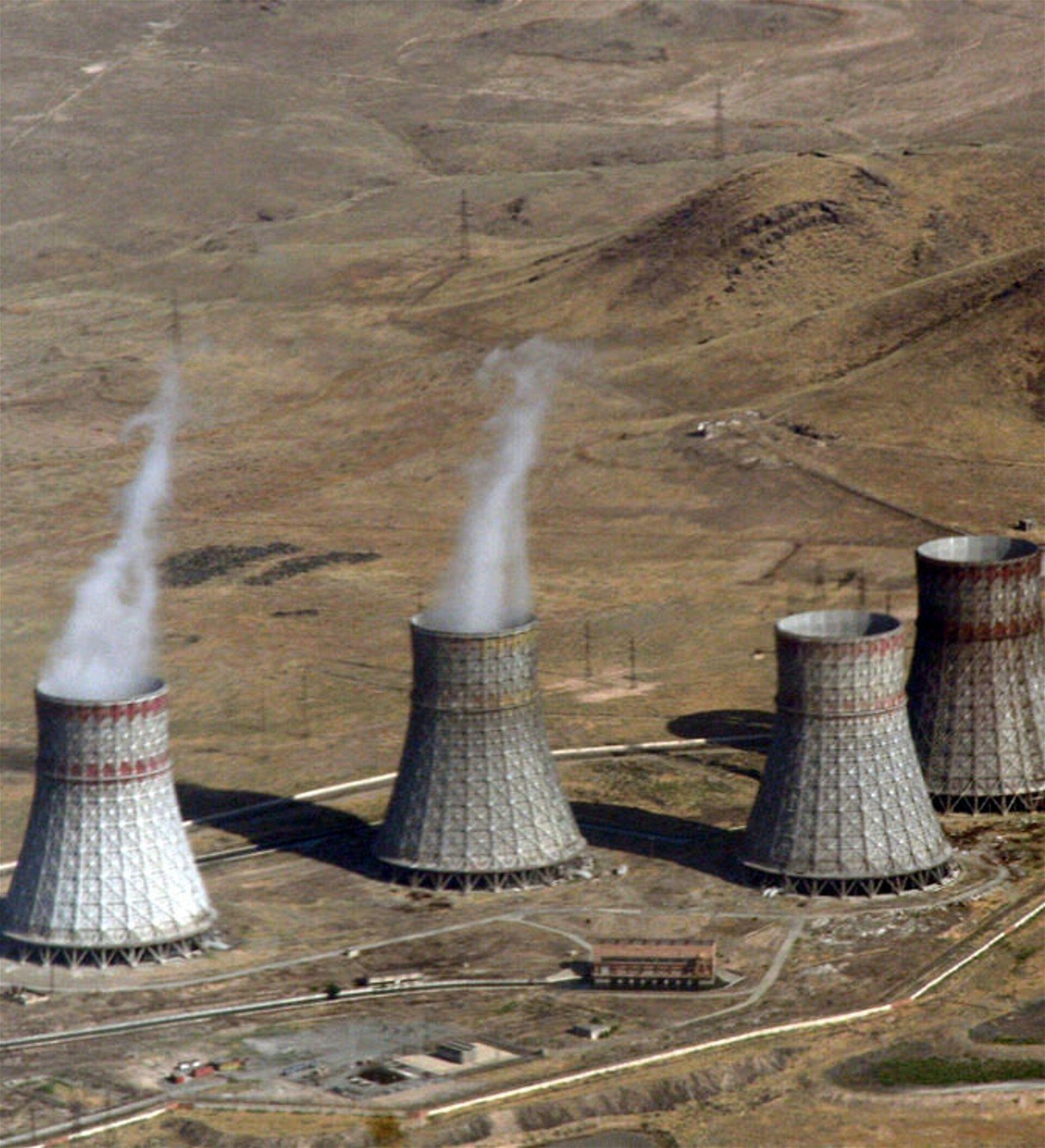Another fiasco awaits Armenia's nuclear illusions Analysis by Caliber.Az
Armenia, which is facing serious financial and economic problems, is seeking ways out of the civilizational impasse by launching a number of projects, this time in the field of electric power. Following IAEA Director-General Rafael Grossi's recent visit to Armenia, the country's government revisited the somewhat stale topic of constructing a new nuclear power plant and the benefits that the republic can derive from it. However, reality shows that Yerevan does not have enough money to rebuild the second-largest Hrazdan thermal power plant or to expand the transmission infrastructure in the direction of Iran. Well, this outsider republic's nuclear ambitions are effectively stalled, both due to financial insolvency and the disappearance of export opportunities for electricity.
Systemic problems in Armenia's electric power industry have been accumulating for decades, but the war lost two years ago and Azerbaijan's restoration of control over its own territories, the beginning of the formation of a powerful energy hub here with "green" generating capacities, with substations and power lines designed for export, in the future deprives the Armenian energy industry of any noticeable prospects for the future.
Most of Armenia's generating facilities and transmission networks were created in the 1960-the 1980s of the last century, with rare exceptions continue to operate without major modernisation to this day. This negative is most clearly felt in the nuclear power industry: The threat of radiation leakage or even a major accident at the Metsamor NPP built in the 70s has been repeatedly discussed at the highest world level, not to mention the requirements of the European Commission, as well as Azerbaijan and Türkiye about the urgent need to close this emergency NPP.
The Metsamor NPP, which was built from 1969 to 1977 in one of the most earthquake-prone points of the Earth, has long since exhausted all possible technical tolerances, and, according to the IAEA, belongs to the objects most exposed to accident risks. In 2014, the European Union designated this facility as a "danger to the entire region" and was even ready to allocate 200 million euros for the closure of Metsamor free of charge, but Armenia rejected this offer.

All subsequent attempts by the Armenian government to somehow rectify the situation were unsuccessful due to the lack of funding and organisational failures of the old and new authorities. Work on the reconstruction of the Metsamor station also did not go well: despite the signing in 2016 of a loan agreement with Russia in the amount of $270 million (+ a grant of $30 million), work on the modernisation of the second power unit, in fact, was not carried out, and under the government of Nikol Pashinyan it was completely curtailed. After abandoning large-scale nuclear power plant modernization, the "velvet" authorities carried out repairs at the station for four and a half months of the operating second power unit, extending its service life until 2026, after which additional control of the nuclear reactor vessel should be conducted. The second power unit of the Metsamor NPP operating today has a capacity of 440 MW and provides about 36-40 per cent of electricity generation in the republic. Yerevan hopes that the work on strengthening the reactor vessel will be recognised by the IAEA as sufficient and the NPP will receive a license for further work until 2036. Today it is difficult to speculate about the feasibility of such expectations, especially since the world community is not in the mood to support the extension of the operation of a worn-out nuclear power plant built on the basis of old technologies and not having a protective casing in the next decade and a half.
Apparently, the experts of the relevant UN structure have no illusions about the future of the emergency facility in Metsomor: during a recent visit to Yerevan, IAEA Director General Rafael Grossi again focused on the prospects for the construction of small modular reactors in the republic. The visit of the CEO has noticeably revived the periodically fading interest in the degrading Armenian nuclear power industry, which has been actively discussed in the media space of this country lately.
This topic is not new, the issue of building a new nuclear power plant with a capacity of 1,000-1,200 MW, considered in 2012-2013, was not crowned with success due to the inability to attract investments of $ 7-8 billion. And even despite the signing in June 2022 of a memorandum of understanding between AAES joint-stock company and the Rusatom Overseas joint-stock company, the structure of the Rosatom concern, there are no real steps in this direction. Yerevan also has no money for the construction of a nuclear power plant of a smaller capacity - 500-600 MW. A similar situation is developing around the option of small modular reactors.
"Nevertheless, the construction of a new nuclear power plant has been actively discussed in the republic recently, including the Russian project with a capacity of 1,200 MW. However, this is not only economically unjustified for Armenia in the current conditions, but also contradicts international regulations on energy security," says expert Edward Arzumanyan, who held the post of Armenia's energy minister in the 1990s.
The expert recalled that, according to international atomic safety legislation, the capacity of one power unit cannot exceed 45-50 per cent of the peak electricity consumption in the country. In Armenia, this peak is a maximum of 1,200 MW, thus, at best, a nuclear power unit with a capacity of no more than 500-600 MW can be built here. Moreover, Arzumanyan believes that Armenia does not have a large consumption market even for such production volumes, the existing domestic demand may soon decrease, and export channels will be completely lost in the coming years.
Armenia has no chance of remaining an electricity exporting country, the same Arzumanyan claims, recalling that the Gas-for-Electricity agreement with Iran expires in January 2026. Iran has no reason to extend the agreement, given the commissioning of two new nuclear power units in the Iranian province of Bushehr in 2026. Production at the Bushehr NPP will increase by 15 billion kWh per year, which is 10 times more than 1.5 billion kilowatts imported from Armenia in 2017-2018. Indirectly, other facts also testify to the imminent curtailment of Iranian-Armenian energy cooperation. Thus, the project of laying a new 400 kW Iran-Armenia transmission line, which was to be financed by Iran (107.9 million euros), was planned to be completed in 2018, but the prospects for its implementation are still unclear.
Georgia, which in the past purchased electricity from Armenia by barter, has refused such imports since 2019 as Armenian electricity turned out to be 40 per cent more expensive than its own, Georgian. In addition, Georgia exports part of its energy to Türkiye by increasing the capacity of its own hydroelectric power plants during peak periods and imports it from Azerbaijan in case of a shortage of water resources. That is, in the South Caucasus, the Armenian energy industry is not at all involved.
The Russian energy market is geographically inaccessible to Armenia, supplies to Türkiye and especially to Azerbaijan are out of the question until the normalisation of diplomatic relations. In addition, Türkiye, with Russian support, is building the Akkuyu NPP with four power units with a total capacity of 4,800 MW. The first one will be launched in 2023, and the last one in 2026, after which Türkiye itself will turn into the largest regional exporter.

It is worth noting that the previous Armenian government planned to build modular nuclear power plants with 600 MW Canadian or 500 MW Chinese nuclear units in 2016. However, without reliable electricity export plans, impoverished Armenia is simply unable to repay multibillion-dollar loans to Canada and China, and these projects are once again stuck in the void.
The current unenviable situation, however, deprives Yerevan of even a glimmer of hope for regional energy exports. Furthermore, all raw materials for energy production, such as gas and uranium for nuclear power plants and thermal power plants, are imported from Russia. Taking logistics into account, import is not cheap and raises the cost of production.
Why, then, did the government of the "land of stones" once again have nuclear ambitions and are planning to increase incredible budget expenditures or increase public debt by investing billions in the construction of a new nuclear power plant?
The question is rhetorical, especially since, according to the expert community, Armenia does not need a new nuclear facility of any capacity at all today. The fact is that the construction of nuclear power plants in the Soviet years was explained by the need for cheap electricity primarily for the needs of the Armenian mining complex and non-ferrous metallurgy enterprises. However, after the defeat in the Karabakh war, this whole industry is in the deepest crisis. Even before the defeat in the Second Karabakh War, the copper smelter in Alaverdi was closed, and after the liberation of the Kalbajar, Zangilan, Lachin and Gubadli districts, Armenia's mining plants were left without raw materials, which had been illegally extracted and exported from the territory of Azerbaijan for the past 30 years. Today, the Zangazur copper-molybdenum combine, an enterprise in Sotka, has sharply reduced production, since only a small part of the deposits remained in the country, and the ore raw materials are largely exhausted here. The decline in production in the field of metallurgy and mining enterprises, which consumed about a third of all electricity, is aggravated by the general economic crisis: production in the number of industries is being reduced or even curtailed in Armenia, the rate of population outflow has increased in recent years, and all this together makes the commissioning of new generating capacities unclaimed.
Considering everything that has been said, Armenia may well limit itself to the development of traditional thermal and "green" energy, especially since the republic's large and small hydroelectric power plants provide about 34 per cent of electricity production, and thermal power plants provide the remaining 30 per cent.
For example, it would be worthwhile to upgrade gas turbine installations that have been inactive for a long time to the capacity (467 MW) of the Hrazdan thermal power plant.
Unfortunately, initiatives in this area are still as hopeless as in other areas of the outsider country: the issues of the return of the public joint-stock company Gazprom of investments invested in the Hrazdan thermal power plant, formerly owned by the daughter of Gazprom-Armenia PJSC, have not yet been resolved, and due to the station's low profitability, there is no interest in its modernization.








